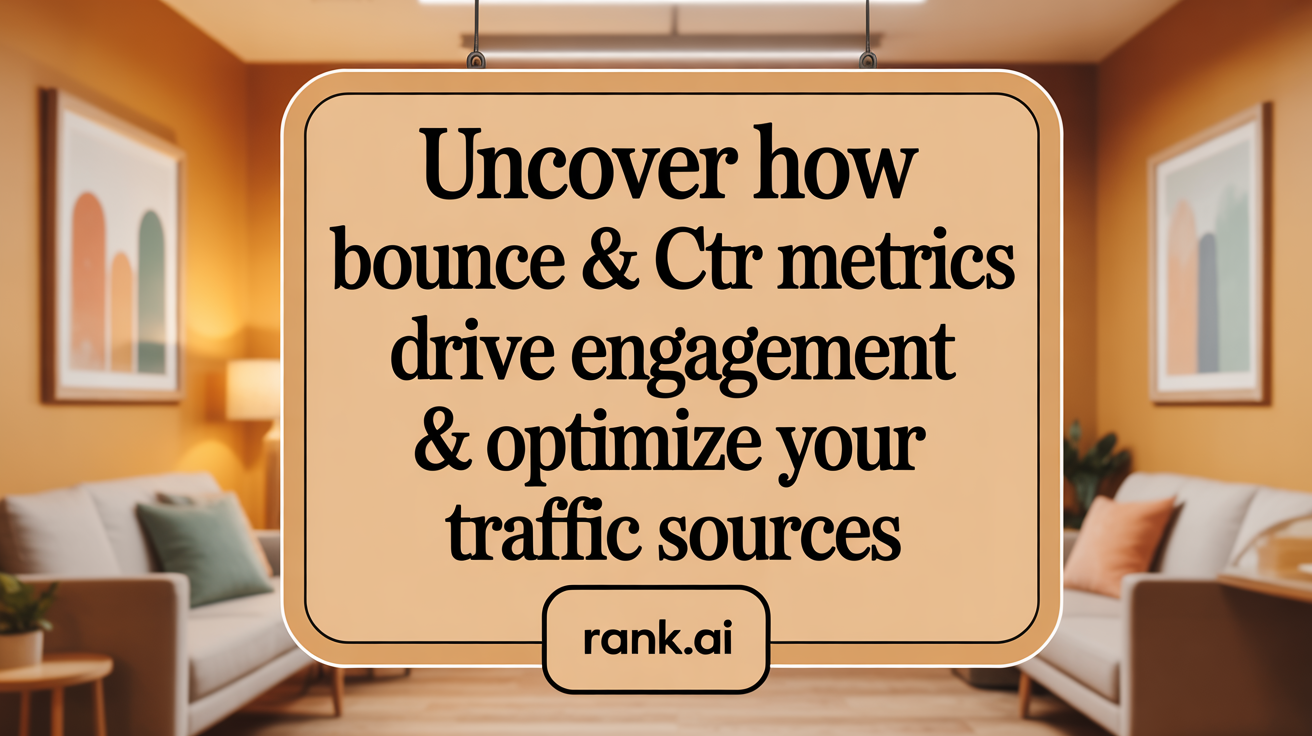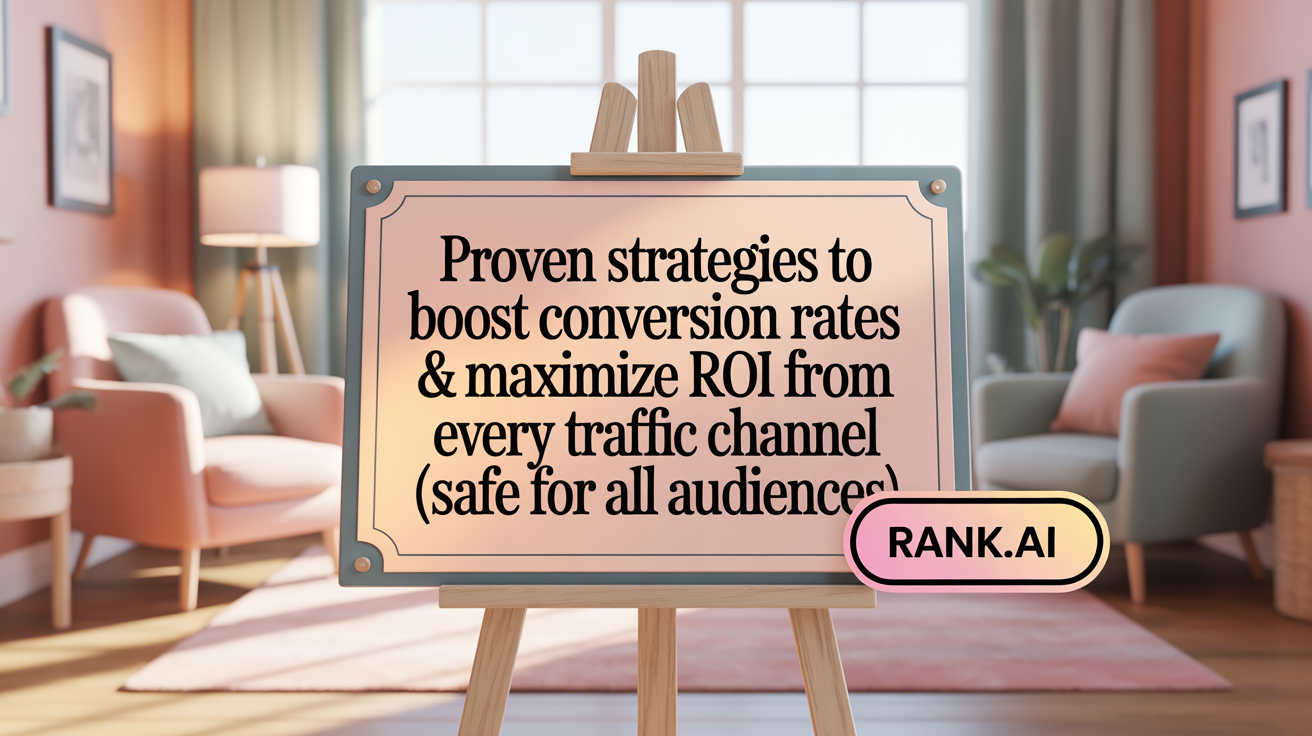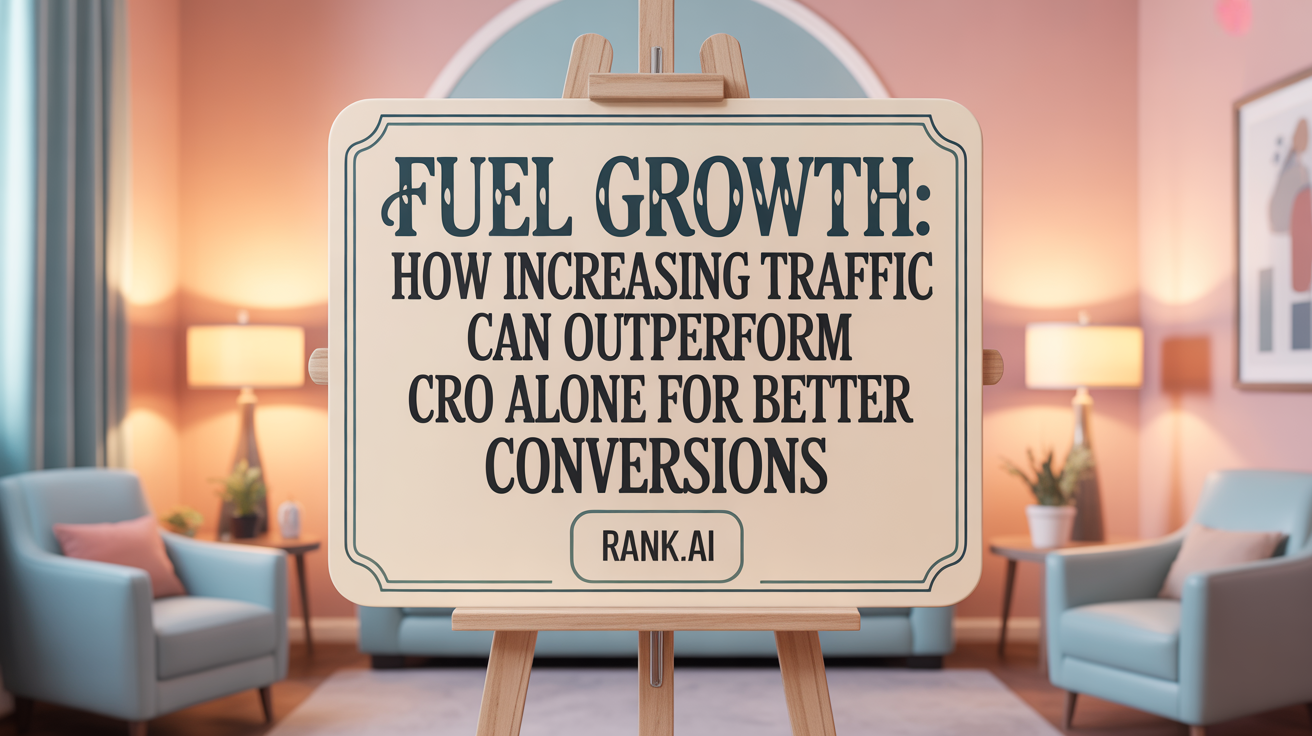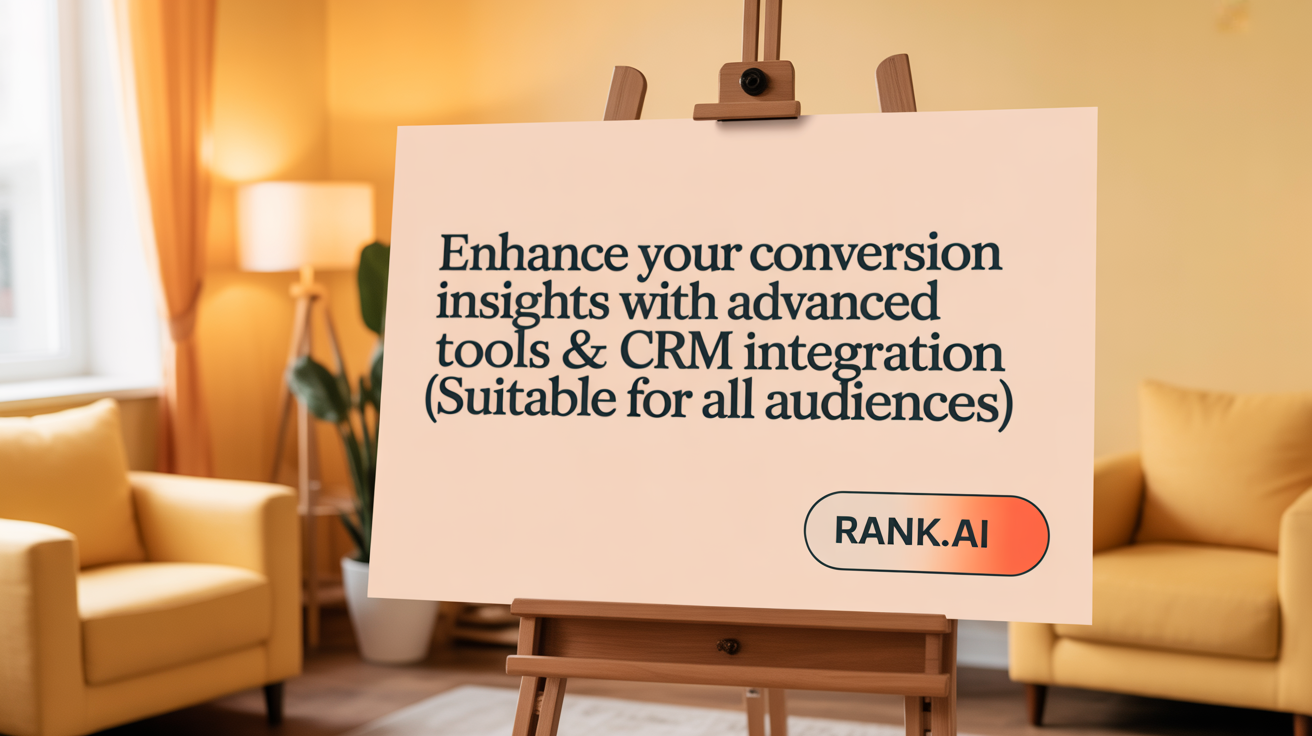Why Understanding Traffic Source Conversion is Crucial for Marketing Success
In today's competitive digital landscape, marketers are striving not just to drive traffic, but to convert visitors into valuable customers with the highest possible return on investment (ROI). Understanding how different traffic sources perform in terms of conversion metrics is essential to optimizing marketing strategies and budget allocation. This article explores key traffic source conversion statistics, the critical metrics involved, and actionable insights into what truly drives the best ROI.
Defining Conversion Rates and Key Metrics for Marketing Success
What is the formula for calculating the conversion rate metric?
The conversion rate's calculation is straightforward: divide the number of conversions by the total number of visitors or audience, then multiply the result by 100 to get a percentage. This percentage indicates what portion of users take a specific desired action, such as clicking a link, filling out a form, or making a purchase. For example, if a website has 10,000 visitors and 200 of them become leads, the conversion rate is (200/10,000) × 100 = 2%. This metric helps marketers evaluate how well their content and campaigns engage users and motivate actions.
Common conversion metrics in marketing
Several metrics are used to monitor and improve marketing performance. The overall conversion rate remains a primary indicator of success. It shows what percentage of visitors complete a targeted goal, such as subscribing to a newsletter or making a purchase. Additional metrics include:
- Post-click conversion rate: measures conversions after ad clicks.
- Post-impression conversion rate: captures conversions from views without clicks.
- Cost Per Acquisition (CPA): calculates the average expense required to acquire a customer.
- Return on Ad Spend (ROAS): evaluates revenue generated per dollar spent.
- Click-through rate (CTR), bounce rate, and engagement metrics further help understand user behavior.
How conversion rates reflect campaign effectiveness
Conversion rates are vital for assessing the success of digital marketing efforts. A high conversion rate indicates effective messaging, landing pages, and user experience, translating into better campaign performance. Tracking these rates over time allows marketers to identify friction points and optimize their funnels. Especially in competitive industries, improving conversion rates often yields more substantial results than merely increasing traffic. Moreover, analyzing conversion metrics by source or device can reveal opportunities for targeted adjustments, ensuring marketing dollars are spent effectively and ROI is maximized.
| Metric | Description | Typical Range/Benchmark |
|---|---|---|
| Conversion Rate | Percentage of users completing a goal | 2% to 5%, with 10%+ considered good |
| Cost Per Acquisition | Cost to acquire a customer | Varies by industry; lower is more efficient |
| ROAS | Revenue per advertising dollar spent | Depends on campaign; higher is better |
| Bounce Rate | Users leaving after one page visit | Below 40% is ideal, above 70% indicates issues |
| Click-Through Rate | Percentage clicking on an ad or link | 1% to 3% for display ads; higher for targeted campaigns |
Understanding and measuring these metrics enables marketers to refine their strategies, improve user engagement, and ultimately grow business revenue efficiently.
Using Google Analytics to Decode Traffic Source Performance
Tracking traffic sources and user behavior with Google Analytics
Google Analytics offers comprehensive tools to monitor where your website visitors come from and how they interact with your content. By analyzing metrics such as session duration, bounce rates, and pages per session, marketers can gain insights into how different traffic sources perform. For example, organic search, paid campaigns, referral links, and social media generate varying levels of engagement and conversions.
This data helps identify which sources are most valuable in driving high-quality traffic. You can also examine user behavior on specific landing pages associated with each traffic source, revealing how visitors from different channels navigate your site and where they drop off.
Tools like Google Analytics allow segmentation of traffic based on source, medium, and campaign, making it easier to pinpoint success factors and areas needing improvement.
Setting up goals, UTM parameters, and attribution models
Effective tracking begins with proper setup. Creating clear goals in Google Analytics enables measurement of specific actions, such as lead form submissions or product purchases. To accurately attribute traffic and conversions to their origins, UTM parameters are added to your URLs, tagging campaigns with source, medium, and campaign identifiers.
Advanced attribution models—like last-click, linear, or time decay—allow marketers to assign credit to multiple touchpoints along the customer journey. Proper setup of these models ensures a realistic view of how different traffic sources contribute to conversions, helping optimize marketing investments.
Leveraging Traffic Acquisition Reports for actionable insights
The Traffic Acquisition report in Google Analytics centralizes data on how visitors arrive at your website. It displays which channels—such as organic search, paid ads, or referral links—generate the most visits, conversions, and revenue.
By dissecting this report, marketers can determine high-performing sources worth investing in further. Customizing reports by adding dimensions like Landing Page helps analyze how visitors from specific channels behave on different parts of your website.
Additionally, integrating Google Analytics with Google Ads or Search Console allows for deeper insights into campaign performance and organic search health. These insights inform targeted adjustments, such as reallocating spend toward top-converting channels or enhancing underperforming ones.
Tracking and understanding traffic source performance through Google Analytics supports continuous optimization of marketing efforts, increasing traffic quality and conversion rates.
Analyzing Bounce Rate and Click-Through Rate Impact on Conversion Insights

What is bounce rate and how does it affect traffic source conversion analysis?
Bounce rate measures the percentage of visitors who enter a website and leave without interacting further, such as viewing additional pages or completing a goal. This metric is crucial when analyzing traffic sources because it varies depending on where visitors come from. For example, email campaigns and referral traffic often have lower bounce rates, indicating higher engagement, while social media or display ads tend to have higher bounce rates, suggesting less relevant or compelling content.
A high bounce rate from a specific source may indicate that visitors from that channel aren’t finding what they expect or aren’t sufficiently engaged. This can result in lower conversion rates from that traffic. By examining bounce rates across different sources, marketers can identify which channels bring in engaged visitors and which need improvement.
Understanding bounce rate helps refine marketing strategies—such as adjusting targeting or enhancing landing pages—to attract more relevant traffic and improve overall conversion performance. Ultimately, analyzing bounce rate in relation to traffic originates enables businesses to optimize their marketing funnel and generate better ROI.
What role does click-through rate play in assessing marketing traffic sources?
Click-through rate (CTR) indicates how well a marketing message resonates with its audience by measuring the percentage of users who click on a link, ad, or call-to-action. A higher CTR signals that an ad or content is relevant and compelling, leading to increased engagement and a greater likelihood of conversions.
CTR is particularly useful for evaluating the effectiveness of paid campaigns, keywords, and other outreach efforts. For instance, a low CTR on a Google Ads campaign might suggest that the ad copy or targeting needs refinement. Conversely, a high CTR often correlates with better quality traffic, which can translate into higher conversion rates.
Marketers use CTR data to optimize their campaigns, allocate budgets toward better-performing channels, and enhance ad relevance. In the context of traffic source analysis, CTR reveals which sources are capturing users’ interest effectively, helping businesses focus on the most promising avenues for lead generation and customer acquisition.
Improving low-performing channels through bounce and CTR metrics
To boost conversion rates, it’s essential to optimize traffic sources identified as underperforming through bounce and CTR metrics. Channels with high bounce rates indicate visitors leave quickly, suggesting a misalignment between audience expectations and content, or poor user experience. Improving landing page design, messaging, or targeting can address these issues.
Similarly, low CTRs highlight campaigns or keywords that are not compelling enough to prompt clicks. Refining ad creatives, adjusting keywords, or improving targeting can increase CTR and attract more relevant visitors.
Implementing A/B testing on landing pages and ad copies allows marketers to experiment with different elements, such as headlines, visuals, or CTA placement. This iterative process, guided by bounce and CTR data, helps identify changes that improve engagement and conversions.
By systematically analyzing these metrics and making targeted optimizations, SaaS and other online businesses can enhance traffic quality, reduce bounce rates, boost engagement, and ultimately increase conversion rates.
| Metric | Typical Range | Impact on Conversion | Optimization Strategies |
|---|---|---|---|
| Bounce Rate | 26-70%, varies by industry | High bounce rates lower engagement and conversions | Improve relevance of landing pages, enhance UX, refine marketing targeting |
| Click-Through Rate | 1-10% (varies widely), average ~2-5% | Higher CTR correlates with more qualified traffic | Enhance ad copy, optimize targeting, test different creatives |
| Conversion Rate | 2-5% average, 10%+ good | Reflects effectiveness of entire funnel | Focus on high CTR sources, reduce bounce, optimize user journey |
Segmentation and Attribution: Pinpointing High-ROI Traffic Channels

Why is segmenting conversion rates important?
Segmenting conversion rates by factors like traffic source, device type, and landing page helps SaaS companies identify where they perform best and where there’s room for improvement. For example, analyzing data separately for organic search, paid campaigns, or referral traffic reveals which channels generate the most valuable leads.
Similarly, breaking down data by device type shows whether mobile or desktop users convert more effectively, guiding design and user experience adjustments.
Landing page segmentation uncovers which pages are most effective at converting visitors and which need optimization. This targeted approach ensures marketing resources are allocated efficiently.
How do attribution models enhance understanding of traffic performance?
Attribution models assign credit to marketing channels for conversions, offering a clearer picture of each channel's contribution to your goals. For instance, last-click attribution credits the final touchpoint before conversion, while multi-touch models distribute credit across several interactions.
Using attribution helps SaaS companies understand the entire customer journey, ensuring investments are directed toward channels that support long-term success.
What are best practices for data segmentation?
Effective segmentation involves selecting relevant data points and utilizing tools like Google Analytics or advanced platforms such as Quantum Metric. Regularly segment data by buyer journey stage and traffic source.
Prevent superficial analyses by focusing on actionable insights—look for trends over time and compare performance across segments. Combining detailed data with attribution insights will uncover high-ROI channels and paths that convert best.
In summary, segmented analysis paired with proper attribution models allows SaaS businesses to refine marketing strategies, optimize high-performing channels, and increase ROI.
Traffic Source Conversion Benchmarks Across Industries
Understanding how different industries perform in terms of traffic source conversions is vital for setting realistic marketing goals. On average, conversion rates from organic search traffic typically range between 2% and 5%. For example, the e-commerce sector often sees conversion rates around 3% to 5%, while SaaS companies generally experience around 1.9%. Healthcare and real estate sectors tend to have slightly higher figures, at about 2.6% and 2.8% respectively.
Conversion performance varies significantly based on the channel and industry. Paid campaigns, organic search, referral links, and direct traffic all contribute differently to overall conversion rates. Organic search is particularly important for SaaS and healthcare, where targeted keywords drive relevant visitors. Referral and paid channels might outperform others in sectors like e-commerce or real estate, especially when campaigns are optimized.
Interpreting these benchmarks helps marketers understand their position relative to industry standards. For instance, if a SaaS firm's organic traffic conversion rate is below 2%, it might indicate room for improvement in content relevance or user experience. Conversely, exceeding these averages suggests a successful strategy.
By analyzing benchmarks across sectors and channels, businesses can prioritize efforts on the most profitable sources. Tools like Google Analytics and platforms such as MonsterInsights facilitate this analysis by providing detailed insights. Setting realistic goals based on industry benchmarks ensures marketing strategies are aligned with achievable results, fostering consistent growth.
Strategies to Enhance Conversion Rates and Maximize ROI from Traffic Sources

How can optimizing website design and user experience improve conversion rates?
Improving website design and user experience (UX) plays a crucial role in increasing conversion rates. A well-designed site ensures visitors can navigate easily, find information quickly, and feel confident in taking desired actions. Speeding up page load times, ensuring mobile friendliness, and creating clear, intuitive layouts help reduce bounce rates and encourage user engagement.
Additionally, segmented measurement—such as analyzing traffic source and device-specific data—can reveal tailored optimization opportunities. For example, adjusting layouts for mobile devices or emphasizing certain content types based on user behavior can boost conversions.
What role do compelling calls-to-action and content relevance play?
Effective calls-to-action (CTAs) guide visitors toward specific actions, whether signing up for a newsletter, downloading a white paper, or making a purchase. Clear, concise, and visually prominent CTAs are essential steps. Coupled with high-quality, relevant content that matches user intent, they help improve the likelihood of conversion.
Aligning content with the needs of different traffic sources enhances relevance. For instance, organic search visitors may look for educational content, while paid traffic could respond better to promotional offers. This relevance enhances engagement, builds trust, and drives conversions.
How does simplifying lead capture and leveraging retargeting campaigns boost traffic conversion?
Simplifying lead capture forms reduces friction, making it easier for visitors to provide their information without feeling overwhelmed. Short forms with clear benefits and minimal required fields lead to higher submission rates.
Retargeting campaigns, using platforms like Google Ads or Facebook Ads, re-engage visitors who did not convert initially. These campaigns remind users of their initial interest, often with customized messaging or special offers, thus increasing the chances of conversion.
By combining simplified lead capture with targeted retargeting, SaaS companies can effectively turn more traffic into valuable leads, optimizing their marketing investments and boosting overall ROI. Integrating these strategies across your marketing funnel ensures a smoother journey for potential customers and better utilization of all traffic sources.
The Critical Role of Traffic Volume in Driving Overall Conversions

Why increasing traffic can sometimes yield higher conversions than CRO alone
While Conversion Rate Optimization (CRO) focuses on improving the percentage of visitors taking desired actions, increasing overall website traffic can sometimes be more effective. Even with a relatively low conversion rate, boosting traffic means more potential customers. For example, a website with a 0.5% conversion rate receiving 100,000 visitors could generate 500 sales, whereas the same site with a 2% conversion rate receiving only 20,000 visitors would yield just 400 sales. Therefore, attracting more visitors can lead to greater revenue, especially when conversion rates are inherently low.
Brand awareness and trust built through repeated exposure
High traffic levels contribute to stronger brand awareness. Repeated visits and exposure foster familiarity and trust among potential customers. When users frequently see a brand across various channels, they are more likely to consider it reliable and choose its products or services. This organic trust-building creates a loyal customer base and encourages word-of-mouth referrals, both of which are crucial for sustainable growth.
Using traffic data to fuel A/B testing and iterative improvements
Traffic volume provides valuable data necessary for effective A/B testing. More visitors allow marketers to gather statistically significant results faster, enabling rapid testing and optimization. By analyzing traffic source data, such as behavior from organic SEO or paid campaigns, marketers can identify which channels and pages perform best. Continuous refinement based on this information leads to higher conversion rates and better marketing ROI over time.
Tools Beyond Google Analytics for Comprehensive Conversion Analysis
 Integrating Customer Relationship Management (CRM) and Marketing Technology (MarTech) platforms can significantly enhance understanding of conversion performance across diverse customer touchpoints. Platforms like HubSpot, Salesforce, and Marketo collect extensive user interaction data, enabling marketers to analyze conversions more thoroughly and tailor marketing efforts effectively.
Integrating Customer Relationship Management (CRM) and Marketing Technology (MarTech) platforms can significantly enhance understanding of conversion performance across diverse customer touchpoints. Platforms like HubSpot, Salesforce, and Marketo collect extensive user interaction data, enabling marketers to analyze conversions more thoroughly and tailor marketing efforts effectively.
Utilizing plugins such as MonsterInsights adds another layer of insight directly within popular content management systems like WordPress. MonsterInsights connects with Google Analytics to display advanced data visualization, including conversion rates by source and medium, in an easy-to-understand dashboard. This facilitates real-time analysis and quick decision-making for optimizing campaigns.
For marketers seeking precise measurement tools, specialized conversion calculators and analytics platforms are invaluable. These tools can automatically compute crucial metrics such as traffic-to-lead ratios, customer acquisition costs, and ROI on marketing initiatives. For instance, dedicated marketing attribution calculators help identify which channels and campaigns yield the best conversions, allowing for smarter budget allocation.
Are there tools or calculators available that help marketers compute and analyze conversion metrics effectively? Yes, several options exist. Beyond general measurement charts, platforms like Google Analytics, Mixpanel, and advanced attribution software provide detailed insights into user behavior and conversion paths. They streamline complex calculations, make data interpretation easier, and support continuous optimization efforts.
Incorporating these tools into your marketing stack enables a comprehensive view of your conversion funnel, leading to better strategic decisions and increased ROI.
Maximizing ROI Through Data-Driven Traffic Source Optimization
Understanding traffic source conversion statistics and related metrics is fundamental to developing marketing strategies that deliver the best ROI. By accurately measuring conversion rates, analyzing bounce and click-through rates, and leveraging powerful tools like Google Analytics, marketers can identify their highest-performing channels and uncover opportunities to enhance conversions. Strategic segmentation and attribution analysis provide deeper insight into traffic quality, while industry benchmarks guide realistic expectations. Ultimately, combining effective conversion rate optimization strategies with sustained traffic growth and leveraging comprehensive analytics empowers businesses to optimize spend, boost lead quality, and drive scalable revenue growth.
References
- Conversion Rate Optimization: The Key to Maximizing Your Digital ROI
- Conversion Rate Optimization: Strategies to Maximize Marketing ROI
- Traffic-to-Lead Conversion Rate - Drivetrain
- Google Analytics: Traffic Source Attribution - Loves Data
- Here's Why You Should Almost Always Prioritize Traffic Over ...
- Conversion Rate from Organic Traffic Analysis - Umbrex
- How to Identify High-Converting Traffic Sources in Google Analytics
- Top 10 Conversion Metrics for Digital Marketing - Profit.co
- 12 Conversion Metrics You Should Be Tracking - OptiMonk
- 10 Essential Conversion Rate Optimization Metrics + KPIs



